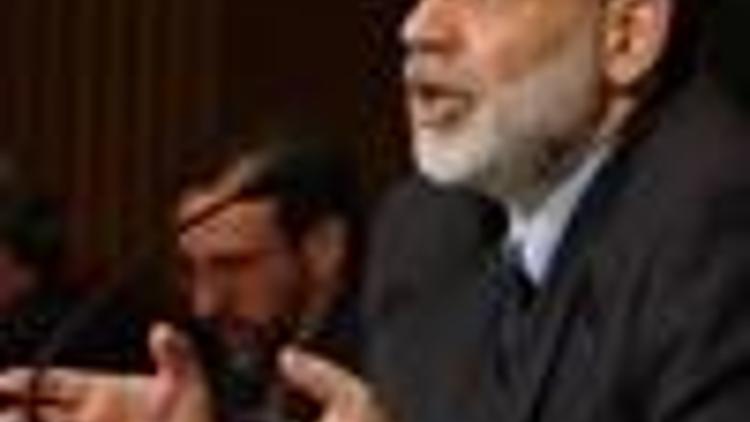Fed says next interest rate move likely to be up, dollar gains in NY
Güncelleme Tarihi:

Even as they grappled with inflation worries, most Federal Reserve officials at their August meeting did not believe the Fed's key interest rate was too low given harder-to-get credit conditions straining consumers and businesses alike.
Documents, released late on Tuesday, provided insight into the Fed's thinking at the Aug. 5 meeting, when central bank policymakers decided to hold its key rate steady at 2 percent for the second straight meeting.�
Confronted by problems at every turn - rising unemployment, shaky growth, credit troubles and creeping inflation - the Fed took a gamble that once again the best move was none at all.
"Most members did not see the current stance of policy as particularly accommodative, given that many households and businesses were facing elevated borrowing costs and reduced credit availability" due to fallout from financial market strains and economic problems, the Fed's documents stated.
But looking ahead, the next direction for rates is probably up, according to the documents.
"Although members generally anticipated that the next policy move would likely be a tightening," the timing was far from clear and depended on incoming barometers on economic growth and inflation. Many economists don’t believe the Fed will start to push up rates to fend off inflation until next year.
The dollar briefly hit a six-month peak against the euro Tuesday as the market mulled the latest evidence of slowing economic growth in
In Asia the euro rebounded in
Speaking last week at a high-profile economic conference in Jackson Hole, Wyoming, Fed Chairman Ben Bernanke signaled that rates would likely stay at 2 percent at the Fed's next meeting on Sept. 16, and probably through the rest of this year.
Some fear that keeping rates at this level, a four-year low, could aggravate inflation down the road.
ONE MEMBER CALL FOR A RISE
At the August meeting, one Fed member - Richard Fisher, president of the Federal Reserve Bank of
Fisher favored an increased "to help restrain inflation and inflation expectations, which were at risk of drifting higher," the minutes explained. Even though financial markets remained fragile and economic growth could weaken further, Fisher "saw a greater risk to the economy from upward pressures on inflation."
But other Fed members generally anticipated that inflation would calm down, although they acknowledged there were risks to the outlook.
That's consistent with the message delivered by Bernanke last week. The Fed chief welcomed the recent drops in oil and other commodities prices, and said he believes inflation will moderate this year and next. However, he also warned that inflation outlook remains highly uncertain.
Economic growth was "generally expected to be weak during the remainder of 2008 before recovering modestly next year," according to Fed documents. Consumer spending, a major shaper of overall economic activity, was likely to slow as the bracing impact of the government’s tax rebates wears off, Fed members suggested.
Meanwhile, heightened investor apprehension about the viability of mortgage giants Fannie Mae and Freddie Mac helped to push up mortgage rates, a development "seen as potentially exacerbating the contraction in the housing sector."
Commercial banks also reported tightening terms on nearly all categories of loans, the Fed documents said.
Separately, the Fed released information about a July 24 conference call that ultimately led the central bank to take additional steps to ease credit strains.
The Fed, among other things, extended its emergency borrowing program for investment banks into next year and said it would allow commercial banks get access to longer, 84-day loans, in addition to the 28-day loans already available. The Fed announced such changes on July 30.
Some Fed members, however, wondered whether the changes might suggest the central bank saw financial markets as more fragile than expected or could make analysts think that the special programs would be made permanent, the documents said.

